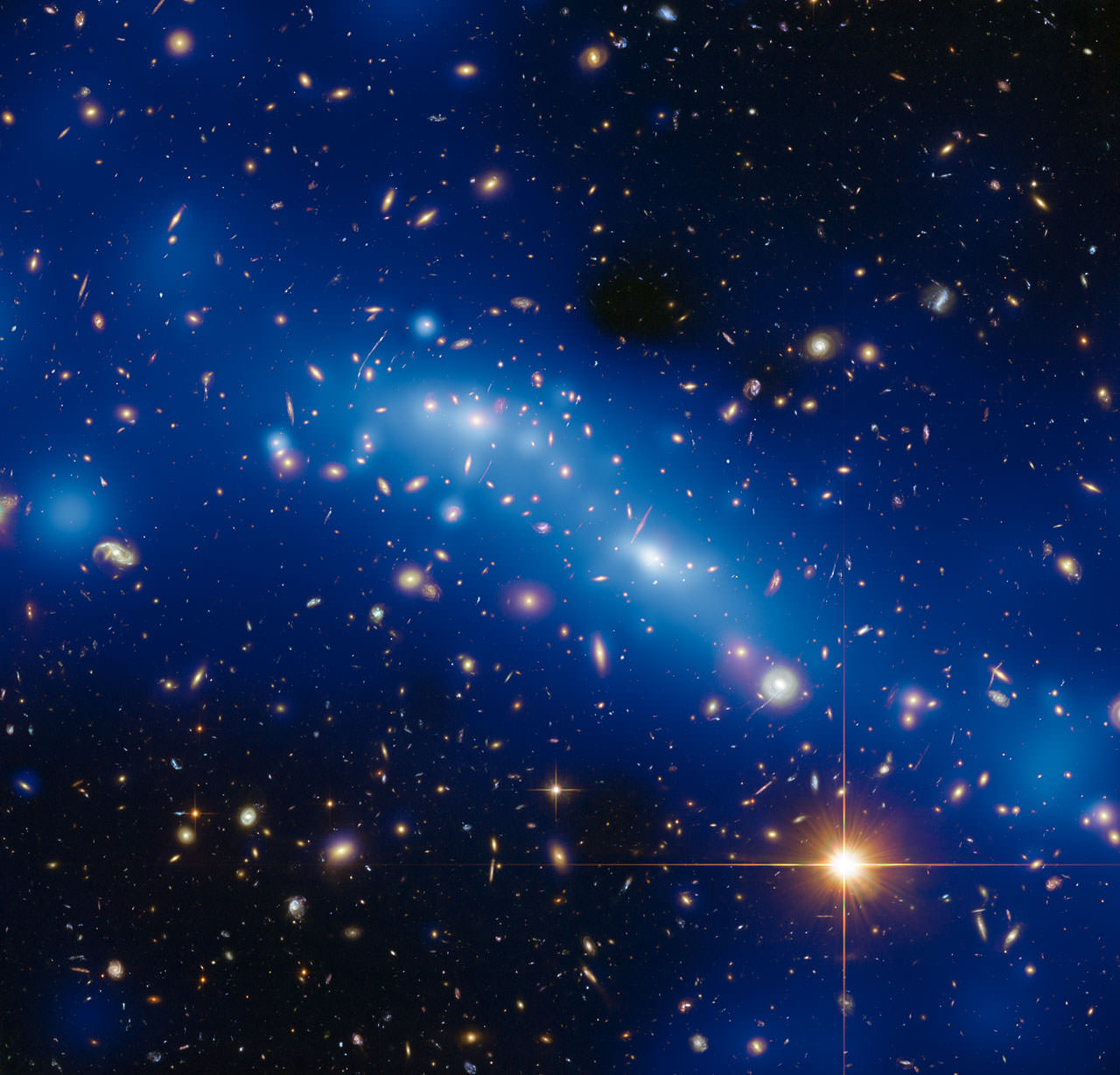Attempts to directly detect dark matter have come up empty. A team of physicists have proposed a brand new method: if dark matter exists in clumps that occasionally pass through the solar system, we may be able to detect their slight influence with ultra-sensitive gravitational waves detectors.
Astronomers have a wide variety of indirect evidence for the existence of dark matter. Everything from the rotation curves of galaxies to the formation of the largest structures in the universe all tell us that the universe is dominated by some new kind of fundamental particle that does not interact with light.
And yet, every attempt to directly detect dark matter through laboratory experiments on the Earth have come up empty. One possibility for this discrepancy is that dark matter is far clumpier than we thought.
Direct detection experiments assume that dark matter is smoothly distributed within each galaxy. But many models of dark matter suggest that it may instead clump up into spheres the sizes of a typical solar system. On large scales this wouldn’t matter (for example, the galaxy rotation curves will come out the same) but on small scales it would matter a lot. Perhaps we haven’t directly found dark matter because we’re unlucky, and a clump simply hasn’t passed through the solar system in the time we’ve been looking for dark matter.
The most challenging thing about dark matter is that it hardly – if ever – interacts with normal matter. But it still makes its presence known through gravity.
A team of physicists hope to leverage this property to develop a new detection scheme, according to a recent paper. As a wandering clump passes through the solar system, it will gently nudge on all the normal matter orbiting the Sun. That includes the matter inside of a gravitational wave detector.
The physicists found that a gravitational wave detector sensitive to the frequency range of around a microhertz could potentially find a dark matter clump once every twenty years.
While intriguing, this approach faces several challenges. For one, we do not yet have gravitational wave detectors that operate at those frequencies. Second, the calculations assume that almost all the dark matter is in the form of clumps the size of the solar system. If the dark matter clumps in a different way then the ability of a gravitational wave detector to find it shrinks.
Still, given the current drive to find any additional evidence for dark matter, it’s worth a shot.

